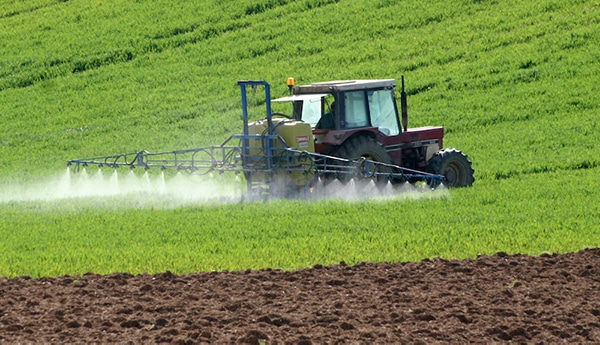Electricity-related deaths and accidents involving powerlines are preventable. Sadly, Energy Safe Victoria has seen over 200 serious incidents with high voltage powerlines since 2017, including 3 fatalities on farms.
Powerlines
As the state’s independent energy regulator, ESV provides tips and procedures for safe working conditions outdoors and avoid hazards which cause injury or death by electrocution.
Be aware of what is above you if your work involves:
- Using tall machinery, such as cranes or augers
- Driving high vehicles
- Raising the tipper tray of trucks
- Raising equipment such as irrigation pipes overhead
- Climbing on top of machinery or storage silos
Powerlines are an integral part of our outdoor landscape, which makes them easy to forget. With the sun in your eyes, trees in your line of vision or if you are watching something else, you may not see how close you are to powerlines. Remember, trucks and machinery don’t have to make contact with the powerlines for injury or electrocution to occur – electricity can jump gaps.
Trucks and powerlines on farms
- Everyone involved in the delivery of materials has a duty of care to ensure the safety of themselves and others
- Electrocutions caused by trucks hitting powerlines on rural properties are on the increase in Victoria. Everyone involved in the delivery of bulk materials to farms is at risk.
- Safety tips to reduce risk
- Identify – Identify all areas where powerlines cross properties
- Hazard map – Identify all electrical hazards before starting work – if in any doubt contact the local electricity distribution company
- Move – Relocate bulk delivery storage sites to a safe area away from powerlines
- Safe delivery – Suppliers of bulk materials must ascertain, when taking orders, the delivery point on the farm for the load, the proximity of powerlines and what safety precautions are in place should there be powerlines in the vicinity
- Don’t park underneath – Never raise the tray of tipper trucks when underneath powerlines
- Driver safety – Drivers should refuse to deliver loads if their safety is compromised in any way
- Spot the hazard – Ensure an ESV registered spotter is on hand when working near overhead powerlines
- Display LOOK UP AND LIVE stickers on any machinery or equipment which is raised overhead
- Monitor weather conditions closely – powerlines can sag in extreme heat and sway in strong winds
- Powerlines are more difficult to see at dawn and dusk
- Remember that electricity can jump gaps
- Only tip material near powerlines as a last resort when there is no other location
No Go Zones
- Observe No Go Zones which prescribe a safe working distance from powerlines.
- Remember, if you are not sure about the location of powerlines, check with your electricity distribution business. A list is on the ESV website.
No Go Zone: farm safety
One of the most significant issues regarding No Go Zones concerns rural and regional properties, especially farms. ESV all too often sees incidents where power lines come into contact with truck tippers (often farm deliveries such as feed or fertaliser), irrigators and other large plant equipment.
In these particular circumstances, the landowner (such as farmers) need to take the following precautions and make the information known to those working on the property:
- identify all powerlines on site and at site entrance or exit points,
- installlinemarkers,andwarningsigns(gatesigns)or other visual indicators on each side of the powerline to warn operators and drivers,
- ensure designated travel paths, including loading and unloading areas are well away from powerlines.
Also:
- be aware that powerlines are more difficult to see at dawn and dusk
- Monitor weather conditions closely – powerlines can sag in extreme heat and sway in strong winds.
- Be aware of spotter requirements for overhead works
No Go Zone: scaffolding rules
When using scaffolding near powerlines:
- Seek guidance from the property owner if unsure or likely to encroach on the distances.
- Also be aware of No Go Zones when using scissor lifts, cranes, concrete pumps, trucks.
- There are new guidelines available on the WorkSafe website which have been made easier to understand and interpret at: www.worksafe.vic.gov. au/resources/no-go-zones-overhead-electrical- power-lines
Merchandise
- ESV produces a range of merchandise including No Go Zone stickers for heavy machinery such as trucks, and warning signs for large properties that have powerlines crossing them.
- For more information go to www.esv.vic.gov.au or follow us on Facebook.
Fallen or sagging powerlines
- If you see fallen and sagging wires do not go near them. Notify the local electricity distribution company or emergency services (police or SES) and stand guard until they arrive.
Recreation activities near powerlines
- Recreation activities, such as sailing, flying a kite or model plane or climbing trees can also be a hazard around powerlines.
- Do not fly kites or model aeroplanes anywhere near overhead powerlines.
For more information visit www.esv.vic.gov.au





